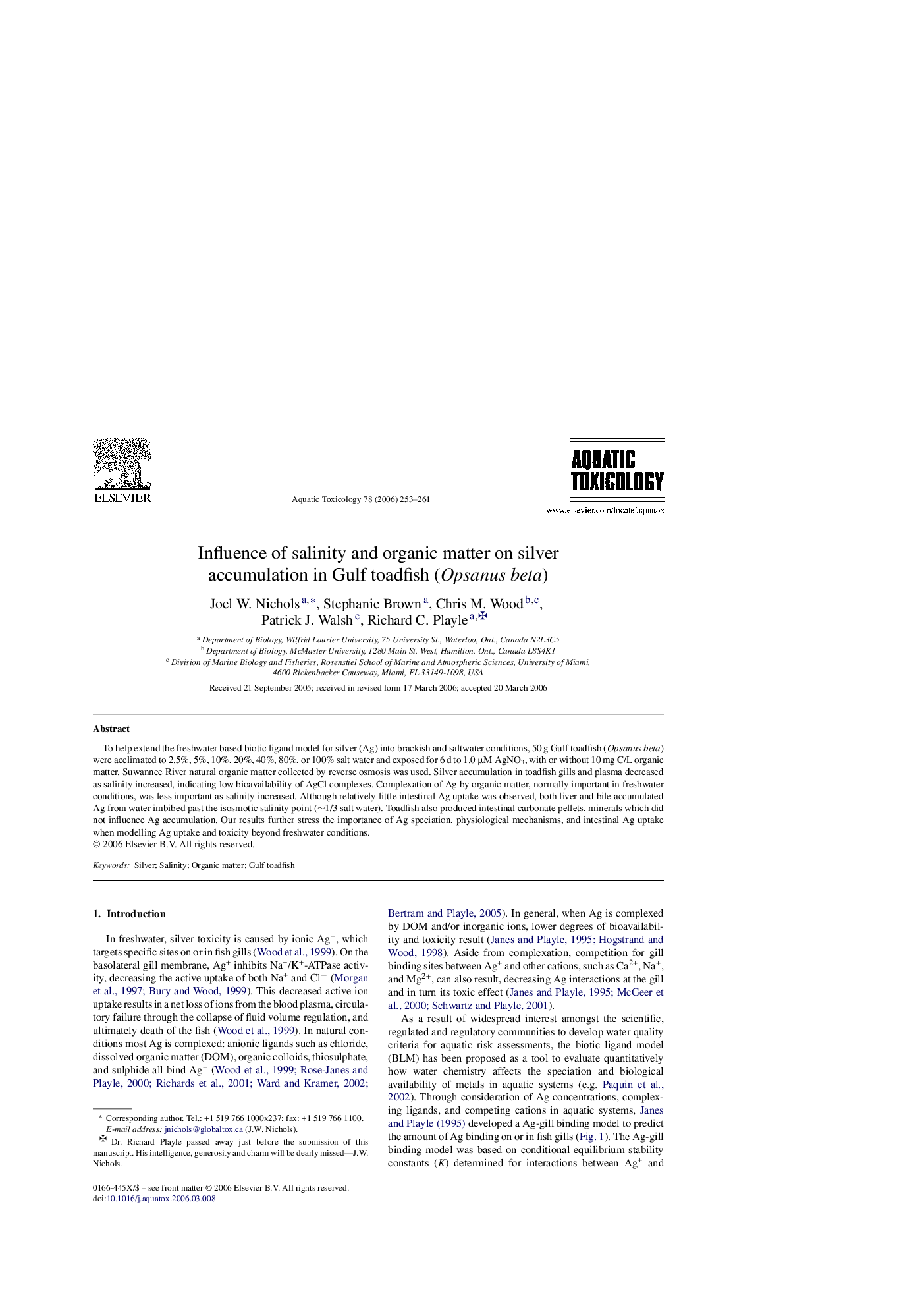| Article ID | Journal | Published Year | Pages | File Type |
|---|---|---|---|---|
| 4531425 | Aquatic Toxicology | 2006 | 9 Pages |
To help extend the freshwater based biotic ligand model for silver (Ag) into brackish and saltwater conditions, 50 g Gulf toadfish (Opsanus beta) were acclimated to 2.5%, 5%, 10%, 20%, 40%, 80%, or 100% salt water and exposed for 6 d to 1.0 μM AgNO3, with or without 10 mg C/L organic matter. Suwannee River natural organic matter collected by reverse osmosis was used. Silver accumulation in toadfish gills and plasma decreased as salinity increased, indicating low bioavailability of AgCl complexes. Complexation of Ag by organic matter, normally important in freshwater conditions, was less important as salinity increased. Although relatively little intestinal Ag uptake was observed, both liver and bile accumulated Ag from water imbibed past the isosmotic salinity point (∼1/3 salt water). Toadfish also produced intestinal carbonate pellets, minerals which did not influence Ag accumulation. Our results further stress the importance of Ag speciation, physiological mechanisms, and intestinal Ag uptake when modelling Ag uptake and toxicity beyond freshwater conditions.
